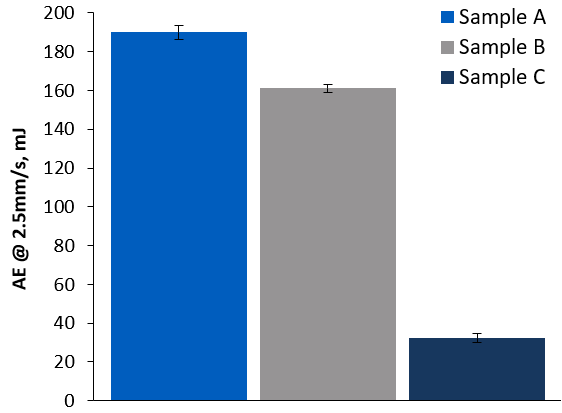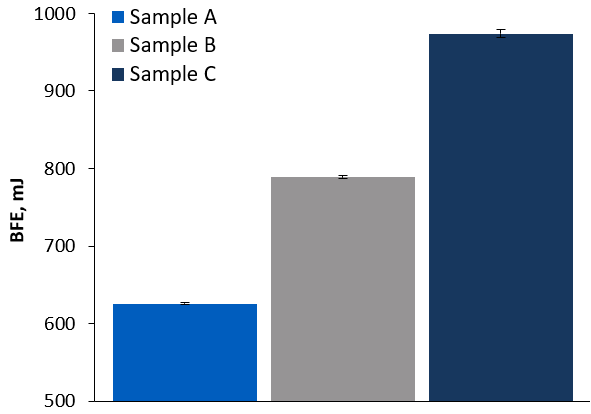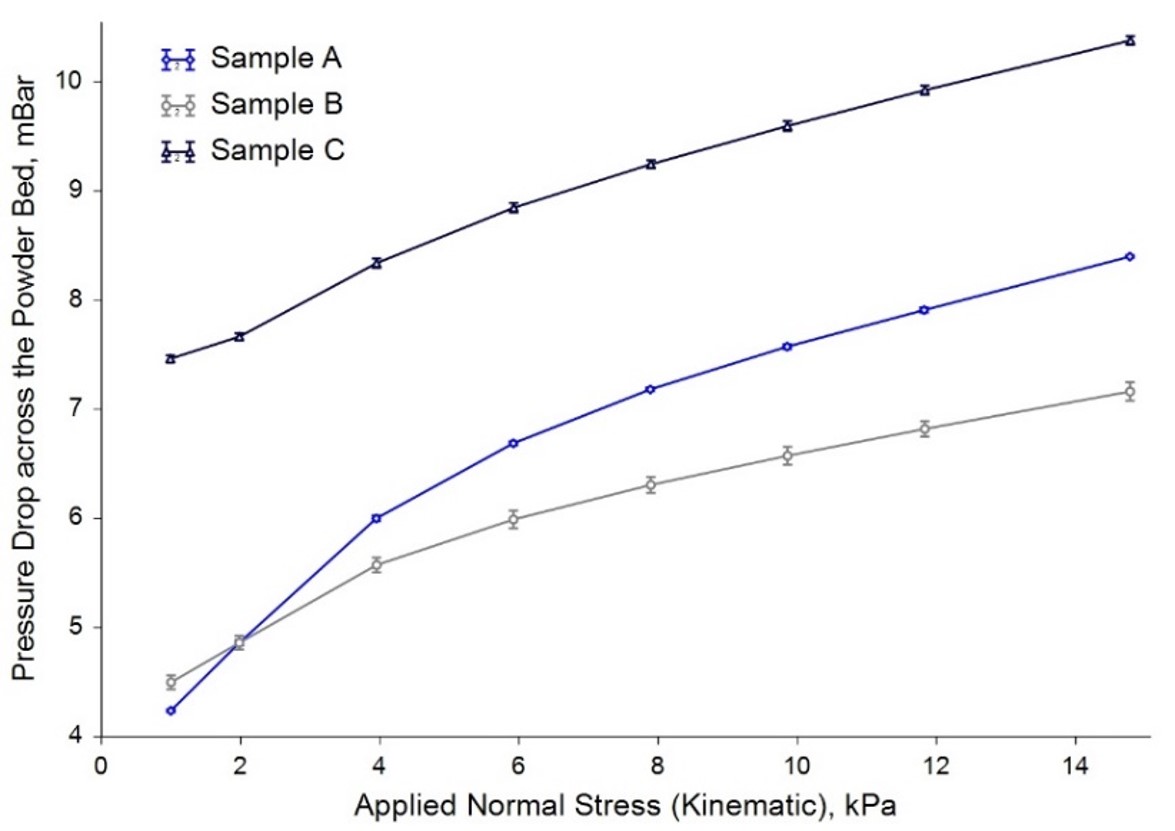Tim FreemanSeptember 25, 2019
Tag: Tim Freeman , Powder Flow , Sachet Filling
(Original Title: Sachet Filling )
Sachets are widely employed in food and pharmaceutical industries and allow small quantities of powder to be presented to the consumer in a manageable format. It is imperative that the sachet filling process produces consistent, uniform fill throughout an entire production run, with low weight variation and high content uniformity. Significant deviation can carry both financial risks, and in the case of pharmaceutical powders, endanger patient health. This also applies to other filling operations across various scales, e.g. IBCs, sacks, capsules, dies/moulds.
Identifying the properties of a powder or blend which result in uniform filling allows for new formulations to be optimised, without the significant financial and time implications associated with running samples through the process, and helps reduce the occurrence of poor content uniformity and high weight variation.

Relative Performance of Different Blends
Three batches of a pharmaceutical blend were used to fill sachets for oral dosing. The three batches flowed differently from the filling shoe into the sachet, resulting in significant weight variation in the sachets. Sample A exhibited good performance and Sample B (with a wider particle size distribution) was classed as average. Sample C had the same particle size distribution as Sample A, but performed very poorly in the process, suggesting that particle size alone did not dictate performance.
The three samples were analysed using an FT4 Powder Rheometer® in order to identify differences between the samples that would explain the varying in-process performance.
Test Results
Dynamic Testing: Aerated Energy
As air is introduced to a powder, the flow of the gas lifts and separates the particles, reducing inter-particular interactions and the overall resistance to flow. The degree to which particles separate is a reliable indicator of the strength of the cohesive bonds. Sample A generated the highest Aerated Energy (AE), which is likely a consequence of its high permeability (see below). Highly permeable powders allow air to traverse the bed readily with little influence on its packing structure. In contrast, Sample C generated the lowest AE, likely as a result of its lower permeability. Furthermore, powders that are sensitive to aeration may also be more prone to segregation and dusting, which can both have a detrimental impact on content uniformity.

Dynamic Testing: Basic Flowability Energy
Sample A generated the lowest Basic Flowability Energy (BFE), requiring less energy to move the blade through the powder. Sample C generated the highest. In this case, low BFE is indicative of a powder that is able to flow more freely under the forced flow conditions present in a shoe feeder operation.

Bulk Testing: Permeability
Sample C generated the highest Pressure Drop across the Powder Bed (lowest Permeability), indicating the greatest resistance to the passage of air. Low Permeability means that air entrained in the powder when it enters the sachet cannot escape which can lead to high weight variation across a manufacturing batch. Sample A was less permeable than Sample B, suggesting that an extreme value for any parameter may not result in optimal performance.


Bulk Testing: Compressibility
Sample A generated the highest Compressibility value, likely a result of the formation of agglomerates. While high compressibility is typically associated with more cohesive powders, the presence of stable agglomerates can also promote content uniformity. The more compressible nature of Sample A does not appear to have a negative impact on the filling operation, probably due to the low stress conditions imposed in the process.

Viewing the four data sets together, it is possible to construct a design space for predicting process performance. If a newly-tested sample has properties in the ‘green’ zone in each test, it can be expected that this powder will perform similarly to Sample A in the process. If the results lie in the ‘amber’ zone, there may be a risk of risk of poor performance and the sample should be used with caution. If the results lie in the ‘red’ zone, however, the powder is likely to perform similarly to Sample C, and prove problematic. Samples in the ‘red’ zone can be screened out of the process before they enter it, minimising poor flow through the process thereby increasing productivity and reducing waste.
Conclusions
The FT4’s Dynamic Flow and Bulk characterisation techniques have quantified clear and repeatable differences between three samples known to behave differently in process. The results also demonstrate that any one single parameter may not be sufficient to fully rationalise process performance, and that a multivariate approach is required.
The results show that powders with a low resistance to dynamic flow (low BFE), and a high Permeability (high AE, lower Pressure Drop) perform best in this operation. In contrast, powders with a higher resistance to flow and a greater sensitivity to aeration, perform poorly. This enables a design space to be defined, against which new formulations can be assessed to predict performance.
Powder flowability is not an inherent material property, but is more about the ability of powder to flow in a desired manner in a specific piece of equipment. Successful processing demands that powders and processes are well-matched and it is not uncommon for the same powder to perform well in one process but poorly in another. This means that several characterisation methodologies are required, the results from which can be correlated with process ranking to produce a design space of parameters that correspond to acceptable process behaviour. Rather than relying on single number characterisation to describe behaviour across all processes, the FT4’s multivariate approach simulates a range of unit operations, allowing for the direct investigation of a powder’s response to various process and environmental conditions.
Author Biography

Tim Freeman, Managing Director, Freeman Technology
Tim Freeman is Managing Director of powder characterisation company Freeman Technology for whom he has worked since the late 1990s. He was instrumental in the design and continuing development of the FT4 Powder Rheometer® and the Uniaxial Powder Tester. Through his work with various professional bodies, and involvement in industry initiatives, Tim is an established contributor to wider developments in powder processing.
Tim has a degree in Mechatronics from the University of Sussex in the UK. He is a mentor on a number of project groups for the Engineering Research Center for Structured Organic Particulate Systems in the US and a frequent contributor to industry conferences in the area of powder characterisation and processing. A past Chair of the American Association of Pharmaceutical Scientists (AAPS) Process Analytical Technology Focus Group Tim is a member of the Editorial Advisory Board of Pharmaceutical Technology and features on the Industry Expert Panel in European Pharmaceutical Review magazine. Tim is also a committee member of the Particle Technology Special Interest Group at the Institute of Chemical Engineers, Vice-Chair of the D18.24 sub-committee on the Characterisation and Handling of Powders and Bulk Solids at ASTM and a member of the United States Pharmacopeial (USP) General Chapters Physical Analysis Expert Committee (GC-PA EC).
-----------------------------------------------------------------------
Editor's Note:
To become a freelance writer of En-CPhI.CN,
welcome to send your Vitae and sample articles to us,
Email: Julia.Zhang@ubmsinoexpo.com.


Contact Us
Tel: (+86) 400 610 1188
WhatsApp/Telegram/Wechat: +86 13621645194
Follow Us:




 Pharma Sources Insight January 2025
Pharma Sources Insight January 2025


